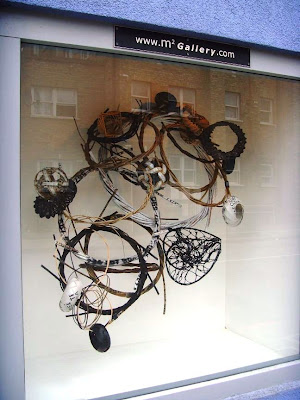When I started secondary school we were given two books - a copy of the King James Bible and a book of Logarithmic Tables. We were told we could keep the bible when we left school but the Log Book - the mathematicians 'bible' - would have to be returned. I covered both in brown paper to keep them clean and stowed them in my desk for the duration.
Despite being a confirmed atheist I loved Scripture (as Religious Education was called at our school). My teacher was a scholar of ancient Greek and Aramaic who had worked on the Dead Sea Scrolls. She was also a liberal thinker with a wicked sense of humour who opened our minds to all manner of 'heresies'. I excelled at the subject.
Mathematics was another story. I had the same teacher for six years and she made my life a misery. She was one of those draconian maths teachers, thankfully fewer in number these days, who should probably be held to account for the poor levels of adult numeracy in this country. She was a bully who derived pleasure from humiliating those less able than herself. The prospect of double maths on Monday mornings made me sick to the stomach. On the few occasions when I was called upon to consult my Log Tables the columns of numbers would swim before my eyes like indecipherable cuneiform. She was also a tyrannical control freak who demanded absolute submission to her rule - and woe betide if you ever forgot your ruler! The idea of educating enquiring minds was an antithetical heresy. I failed O-level maths twice before deciding enough was enough and I handed back my Log Tables. Whereupon Miss T flew into an apoplectic rage and ordered me (then aged 17) to stand in the corner of the room - the classic punishment in Victorian times for the class dunce - thought this was the late 1960s! I politely refused, found another teacher and passed my O-level maths on the next re-take.
I confronted many of these demons in 'Show Your Working Out' my solo show at the m2 gallery in 2010. Though something of a cliche this phrase, beloved of maths teachers and uttered with varying degrees of exasperation, makes obvious connections with showing aspects of both the material process and the hands-on thinking through making of contemporary craft. Though we're often only privy to the final resolution the mis-calculations, crossings out and scribbles in the margins can be equally revealing to an onlooker.
I was particularly inspired at the time by the writings of the 17th century astronomer and mathematician Johannes Kepler who wrote of geometry as having "... two great treasures; one is the theorem of Pythagoras; the other the division of a line into extreme and mean ratio. The first we may compare to a measure of gold, the second we may name a precious jewel." He was referring to geometry but it was the poetry of his language that struck a chord in me.
My 'measures of gold', plaited vintage steel tape-measure bangles.
Made in my home town, the steel city of Sheffield, by Rabone Chesterman - a company that specialised in high calibration tools and equipment - these tape measures with their exquisitely etched and printed numerals offered for me a way of literally and metaphorically weaving mathematics and three-dimensional geometry using an intriguing plaiting technique.
As the numbers weave over and under from left to right in a continuous line of progression, following the law of unintended consequences sometimes unforeseen disruptive patterns emerge.
I've just discovered that Kepler also wrote an essay in 1611 'On the Six Cornered Snowflake' which he gave as a Christmas present to his employer the Emperor Rudolf II - "since it comes down from heaven and looks like a star".
BLING !!! (my guiding star) Stella Harding 2010, hexagonal plaited steel tape measures, dyed chair cane and spun paper. Photo: Trevor Springett

Stella Harding BLACK PEARL 2010, steel tape measure, polypropylene strapping tape and spun paper. Photo: Trevor Spingett
I appreciate Kepler's fascination for pentagons too - plaited in my case.
Stella Harding 2008, painted spun paper
Open hexagonal plaiting is another technique I come back to again and again - exploring it in different materials.
Stella Harding (with Shane Waltener) 2011, stitched plastic bags, for Practical Basketry Techniques A&C Black 2012
Stella Harding 2012 'Between the Lines', stamped lead, for Maggs Beneath the Covers
Twining with 5-9 year-olds at Pitzhanger Manor in 2011 - one of my favourite projects from 'Practical Basketry Techniques'.
When you think of maths as the science of pattern it's not so scary and even a five year old can being to get to grips with it.
My contemporary basketry will feature as one of five case-studies (including weaver Margo Selby, furniture-maker David Gates and lace makers Carol Quarini and Gail Baxter) when 'Beauty is the First Test' opens again on 27th April at the National Centre for Craft and Design in Sleaford. I can give a sneak preview of the piece that Liz Cooper chose to represent the mathematical concepts underlying many of my pieces.
ARCHEFOSSIL 2012 - one of the latest in my line of spiral plaited 'Jewels'. Photo: Arnold Borgerth.
Amongst other things this tightly interlocking three-dimensional spiralling form represents, for me, the ability of the human hand to grasp tacit knowledge that the mind might otherwise let slip. And, since I've discovered, through basketry that I have 'mathematical fingers', I'll be letting go of my previous maths phobia.




.jpg)




